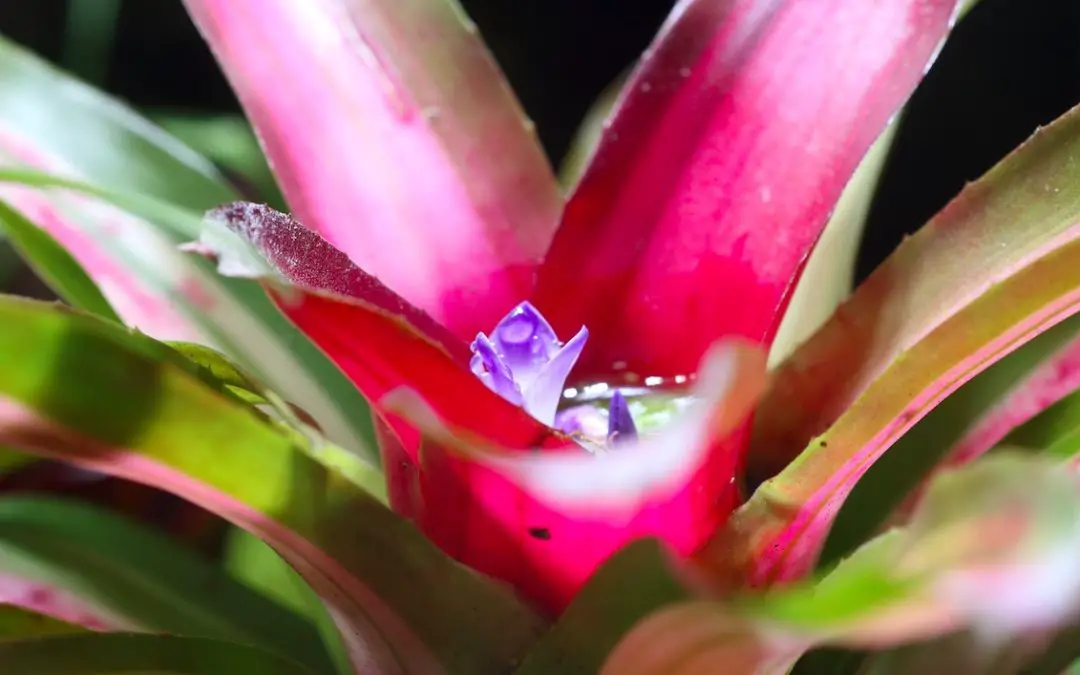I’ve moved house plants around before. Sometimes they’ve taken a bit of a hit, and took a while to bounce back. Looking forward to buying some living wall kits and putting one together, I wanted to make sure I did my research so I could pre-empt any issues.
Plant stress is an important topic. It’s one of the major reasons that living walls can have a tough time getting established. It’s important to set up the right micro-climate for your plants, otherwise stress can cause them to decline and die.
So how can plants become stressed in living walls?
Plants can become stressed in a living wall because of environmental changes or physical damage. Environmental factors that can cause stress are: changing light conditions, pests, disease, over or under-watering, nutrient deficiencies, over-fertilization, exposure to high levels of nutrients or chemicals, soil ph too high or low, and high or low temperatures. Stress usually occurs when plants are moved. This could occur during the first few weeks or months after establishing a living wall or vertical garden, or if there’s a change in fertilizing, watering, or lighting conditions.
Plants are unable to physically move out of the influence of stress, (except in rare exotic cases like the Mimosa Pudica)! This means they’re relying on you to give them the natural environment they’ve evolved to live in. If your plants aren’t looking their best, check the following factors from most likely at the top, to least likey at the bottom (roughly). Most of these will vary by species.
- Water: over/under-watering, all soils should drain regardless (no stagnant/trapped water)
- Lighting: too much or too little
- Humidity: ferns are an example of a common living wall plant that prefers high humidity
- Nutrients: too much nutrients in the soil is more common that not enough if the soil is newly purchased
- Temperature: Indoors, most plants will be comfortable if humans are
- Pests and Disease: Look for signs of insects on the plant, and larvae in the soil
- Soil pH: This can be tricky to diagnose, a good soil test is required
How can change in light stress plants?
UV-B rays are some of the most harmful for plants. UV-B rays can damage DNA, chlorophyll and other living matter. Luckily, around 95 % of UVB rays are absorbed by ozone and other gases in the atmosphere. So plants only have to content with the other 5 %.
Some plants have built-in light level indicators: variegations! Variegations are lower chlorophyll parts of the plant. Since chlorophyll is green, this shows up as lighter, less green coloration. If light levels increase, variegations will increase, if light levels decrease variegations will decrease too.
You can get a feel for how much light your plants are getting based on the light source. From highest light intensity to lowest:
- South facing window
- East facing window
- West facing window
- North facing window
- Regular in-ceiling indoor light
Fluorescent light, and LED light sources can provide a lot of light intensity if they’re the right spectrum for photosynthesis.
How does over-watering impact plant stress?
Overwatering is one of the most common ways indoor plants die. Overwatering can happen because too much water is being added, but also because water isn’t draining quick enough. Roots need water, but they also need oxygen from the air. The stress on the plant depends on how long the roots are submerged for.
If it’s for an extended period of time, tissue can die and decay. This is called root rot.
Symptoms could include:
- Dead, brown, black or discolored roots
- Oedema on the vegetative tissues
- Crown rot (rotting near the soil line)
- Unpleasant smells
Sub-irrigation is a good way to present this from occurring. Sub irrigation relies on capillary action to wick water upwards into the plant. The soil doesn’t become water-logged, in a properly designed system over-watering is impossible.
A severely over-watered plant that’s beginning to decay has weakened defences against pests and disease.
Do pests and disease stress plants?
Pests and disease are the herbivores and decomposing microbes of the natural world. Healthy plants are well-equipped with natural pesticides and other defense mechanisms to resist most attacks.
Pests can usually be seen if you look closely enough. Look under leaves, and in the top few inches of soil.
Disease is not as likely as pest infestation. Discolored or drooping leaves, stunted growth are all signs of disease.
Planting a diversity of plants can be a good way to prevent widespread pest and disease outbreaks. Pests prefer certain plants, and if there isn’t a large patch of the same species, then pests might not as attracted to nearby plants.
Too much or too little water are the main causes of plant stress, which gives pests and disease an opportunity to take hold. Keep your plants healthy and they’ll have strong defences.
How does under-watering impact plant stress?
This is something I had to dig into a bit. I didn’t know a lot, but I found a great resource. Published in 2014, the paper “Response of plants to water stress” opens with this:
Water stress adversely impacts many aspects of the physiology of plants, especially photosynthetic capacity. If the stress is prolonged, plant growth, and productivity are severely diminished.
Water stress and drought tolerance are important factors on the world stage for food production. Water shortages in agricultural areas are some of the most restricting factors for the global food supply.
Scientists are actively working to develop drought tolerant strains of plants, with promising results. There are a few botanists that I actively follow. One is Dr Jill Farrant, she’s engineering desiccation tolerant, drought resistant crops. Her research is really critically important for food security. It also has potential applications for cultivating plants in space and on mars where water resources are scarce.
What stresses do nutrient deficiencies cause in plants?
Nutrient deficiencies can cause a lot of different stresses in plants. The obvious one is stunted growth. Plants use nutrients to build new tissue, and for cellular processes in existing cells. Without the right combination of nutrients, they’re unable to do this.
Yellowing of leaves and stems can be another effect. Chlorophyll, the green pigment used for photosynthesis can be produced in lower amounts.
As a reaction, plants will sense the nutrient deficiencies and take action to survive. They may increase lateral root growth and grow longer root hairs.
And just because a nutrient is in the soil, doesn’t mean it’s available to plants. Iron is one of the most common elements on earth, but a lot of plants are starved for iron! It’s because the iron can form insoluble compounds in basic pHs.
How does high or low soil ph stress plants?
The optimal pH range for most plants is between 5.5 and 7. pH is a measure of the how acidic of alkaline your soil is. To get an idea of the range, lemon juice is around a 2.5, pure water is 7 (neutral), and chlorine bleach is 11 to 13.
Soil pH affects plants in multiple ways. Many plants are reliant on nitrogen fixing bacteria in the soil. These bacteria convert nitrogen in the air to forms useful to plants. These are ammonia, nitrates, nitrites and other compounds that plants can absorb through their roots. Nitrogen fixing bacteria.
Many nitrogen fixing bacteria do well in slightly acidic pH, from 5.5 to 7. If pH drifts outside of this range the plant can become deficient in nitrogen.
Fertilizer and cation-exchange capacity (CEC) in the soil are also impacted by pH. I think of CEC as the short term storage potential of nutrients in the soil. It’s the ability of the soil to retain the cations of nutrient salts, so affecting pH affects the nutrients available to plant roots.
Clay soils are particularly sensitive to pH as they such high surface areas at the microscopic level. Clays can become denser and less porous when pH is out of range.
Extremes of pH can also chemically damage young plant tissue. Fresh roots and vegetative growth can be burnt by very acidic or alkaline soil.
How does high temperature stress plants?
High temperatures can wreak havoc on plants.
Some plants roll up their leaves when heat stressed, tomatoes do this. They’ll tend to dry out faster, and will look wilted or droopy.
Tomatoes, beans and peppers and other fruiting plants will drop their flowers if heat stressed.
Increasing nutrients through fertilizing will not help. Fertilizing will signal to the plant that nutrients are available, and it will try to grow new vegetation. This will stress the plant out further.
Avoid fertilizing and focus on watering if you suspect a plant is heat stressed.
How does low temperature stress plants?
Temperature is an important variable for all living organisms. Plants are no different. The rate of cellular processes including photosynthesis and respiration in plants are largely restricted by cold temperatures. Plants evolve to optimally develop under certain temperature ranges.
Low temperatures test a plant’s hardiness. Hardiness describes the minimum conditions for a particular plant’s survival. The minimum temperature is important, but also the length. A plant may survive a certain temperature for one night, but if exposed to that temperature for months it may die.
Cold tolerance is a combination of genetics and acclimatization. Plants can acclimate to cold temperatures over time. If suddenly exposed to cold, they might drastically reduce chlorophyll production, senesce (drop their leaves), or die. Through gradual reduction in temperatures, plants can handle deeper cold.
Temperatures below the freezing point of water (32 F or 0 C) can injure plant tissues. The damage is a result of ice crystal formation. This can dehydrate cells and rupture delicate membranes and structures in the cells.
Less extreme temperature drops can disrupt key processes in the cells. Chemical and enzymatic reactions are temperature dependent. A drop in temperature can interrupt biomolecular processes that are critical for cell function. This can cause plants growth to be stunted, and certain leaves and structures to stop functioning optimally.
How does physical damage stress plants?
Physical stress taxes the resources of a plant through a number of mechanisms. The physical damage opens a path for pests, fungi, and disease to bypass the protective layers on the outside of plants.
It can also cut off sugar and water flow within the plant, cause branches or stems to dry out and die. Plants respond differently depending on the cause of the damage. If it’s by disease, insects, or cold, the plant will respond differently. For example it might respond by slowing its metabolism (drought), releasing antibiotics (fungal or bacterial infection), or insecticides (insect attack).
Deploying these defences puts a strain on the plants resources. Depending on the length and severity of the attack, the plant could undergo significant stress.
Sources
Response of plants to water stress: Frontiers in Plant Science, 2014

I’m Alex Lafreniere. I learned a lot about plants when I built and operated a landscaping company. But, there’s always more to learn. Ever since travelling across the world, I’ve wanted to find ways to bring more tropical and exotic plants into my life. This is the site where I share everything I’ve learned with you.
This site is owned and operated by Plant Hardware, a sole proprietor headquartered in Calgary, Canada. Plant Hardware is a participant in the Amazon Services LLC Associates Program, an affiliate advertising program designed to provide a means for sites to earn advertising fees by advertising and linking to Amazon.com.Plant Hardware may also participate in affiliate programs with Bluehost, Clickbank, CJ, ShareASale, and other sites. Plant Hardware is compensated for referring traffic and business to these companies.

